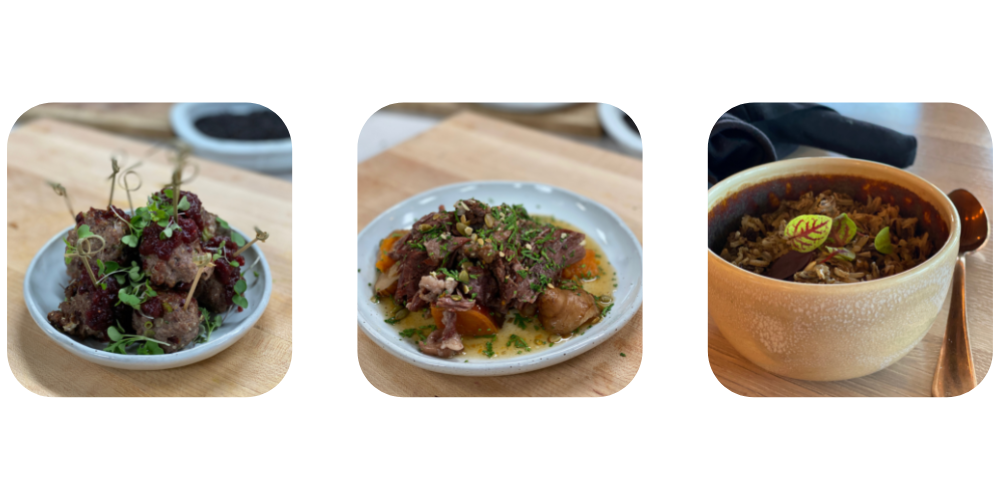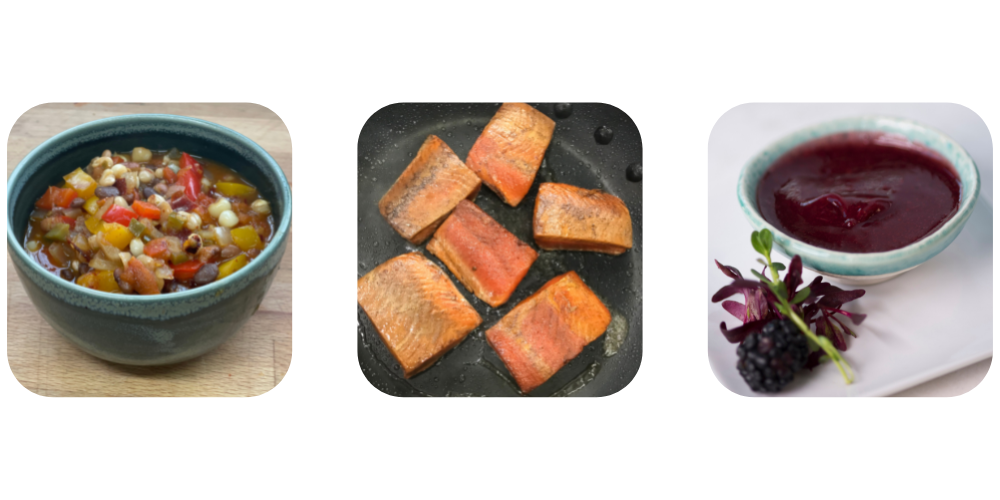Gluten-Free Native American Dishes
For thousands of years, the indigenous people of present-day United States – Native Americans – developed complex food and agricultural systems with diets consisting of a wide variety of foods that they foraged, hunted and grew. Native American food traditions were rooted in a deep connection to the land and varied based on what was available in their region.
Traditionally, Native American foods were naturally gluten-free such as corn, squash, and beans – as well as strawberries, blueberries, potatoes, tomatoes, and turnips, just to name a few. Protein in Native diets included bison, moose, venison, and duck, as well as trout, salmon, and oysters if they lived near water sources. Native Americans ground down corn, nuts, and seeds to make flour for baking.
Forced Changes to the Native American Diet
When European settlers moved into Native American territory, they brought European-style agriculture with them. They cleared the land of native species and planted row crops, including wheat and other foreign grains, significantly altering Native American food systems and their Native ways of life.
Commodity foods such as lard, salt, sugar, and wheat flour soon made up a large portion of Native American diets. Many foods now commonly associated with Native American cuisine, like fry bread—a deep-fried staple made with wheat flour—were forced adaptations of available ingredients.
As many Native Americans’ diets changed, not only were their culinary traditions made inaccessible, but rates of chronic diseases like diabetes, heart disease, and cancer increased.
Returning to traditional diets could be a key to reversing these trends.
Core Elements of Traditional Native American Food
Three Sisters
Native Americans refer to corn, squash, and beans as the “Three Sisters,” a staple of their cooking. Historically, these three items were planted together for agricultural advantages and formed a nutritious dietary combination for many native American populations. Some recipes combining all three include:
Succotash – A delicious and easy way to bring these ingredients together in one dish.
Three Sisters Soup – A hearty one-dish meal also featuring hominy.
Wild Rice
One of the few “grains” native to North America, wild rice is grass that grows in lakes, rivers, or streams. Wild rice is botanically distinct from more commonly known white, brown, red, or black rice and has a unique earthy flavor.
Substitute wild rice for potatoes, pasta, or white rice, or in a traditional Native American dish like wild rice sauté with sweet potato.
Wild rice can also be used to extend and add flavor to meat-based dishes. Here’s a healthy twist on an old standby: Wild rice hamburgers.
Nuts
Various types of nuts were traditionally consumed by Native Americans, including chestnuts, walnuts, pecans, acorns, and pine nuts. Nuts could be stored for future consumption during lean winter months and added important protein, fiber, and fat to the diet.
Some traditional uses of nuts may be new to you, such as this Kanuchi pureed nut soup, but well-worth trying.
Berries
Blueberries, huckleberries, salmonberries, cranberries, and blackberries, among others, have been gathered by Native Americans for centuries. In modern times, berries have garnered more attention due to their high antioxidant content, making them a healthful addition to the diet. Some Native American recipes with berries include:
Blueberry and peach salsa – A fresh and sweet salsa recipe.
Potawatomi berry rice – Incorporate berries and wild rice together in this side dish.
Chia pudding with berries and popped amaranth – A breakfast or dessert dish inspired by the Ohlone Tribe of California.


Locally Grown Vegetables
To be more in-tune with the land and nature – and for optimum flavor – look for in-season and locally grown vegetables for cooking and explore new ways of combining and preparing them.
Roasted turnips and winter squash – Sunflower seeds and herbs add flavor and texture.
Fried green tomatoes with cornmeal – Cornmeal provides a crispy delicious coating.
Stuffed Sugar Pumpkin – Pumpkin isn’t just for pie at Thanksgiving. This dish is packed full of warm flavors, fiber, and protein.
Meat and Fish
Options vary with local availability, but here are some Native ways to prepare protein-based dishes from the American Indian Health and Diet Project.
Fry Bread
This Native American staple can be made gluten-free: Gluten-free fry bread
Greater awareness of, and a renewed emphasis on using whole and natural foods, can not only improve health but open up more options for those eating gluten-free.
Getting Back to Tradition
Several organizations are helping Native communities connect to their cultural heritage through traditional foods. Find more information here:
- Indigenous Food Lab – Indigenous Food Lab is a professional Indigenous kitchen and training center establishing a new Indigenous food system that reintegrates Native Foods and Indigenous-focused Education into tribal communities across North America.
- The Sioux Chef – Committed to revitalizing Native American Cuisine and re-identifying North American Cuisine and reclaiming an important culinary culture long-buried and often inaccessible.
You don’t need to be Native American to appreciate natural, traditional foods or to support these movements. Learn more about them by clicking the links above.
Content: With contributions from Hannah Grant, Bastyr University Dietetic Intern, 2022
Photos Courtesy of NāTIFS & The Sioux Chef
Header Image: Owamni Grilled Salmon & Root Veggies Credit Heidi Ehalt
The information on this website is for educational purposes only. Consult your healthcare team when considering this information.
© 2022 Gluten Intolerance Group. All Rights Reserved
